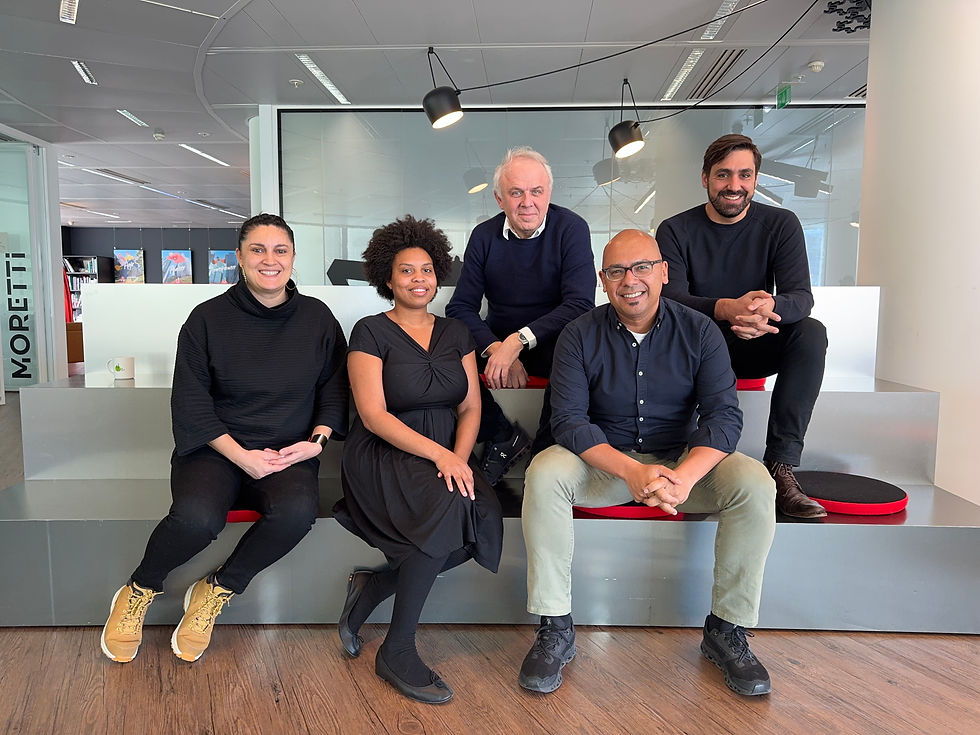
Building the Post-Carbon City: Economic Resilience, ESG Financing, and the Future of Urban Regeneration
As global cities transition toward sustainable urban futures, the shift to a post-carbon economy is no longer a vision—it is an imperative. However, decarbonization is not just about architecture and infrastructure; it is a profound economic, social, and financial transformation that requires innovative governance, financing models, and a deep understanding of local economic realities.
Craig Kensley, Executive Director of GrowZA, was one of 20 global professionals from 13 countries selected to participate in the prestigious Flash International Urban Workshop: Saisons District, Driving La Défense’s Urban Renewal. This forward-thinking initiative convened urban planners, economists, environmental sustainability experts, architects, and governance specialists to tackle the strategic regeneration of the Saisons district—a gateway to Europe’s largest business hub, La Défense.
Craig’s participation was not just about contributing to urban design; it was about ensuring that economic viability, ESG-driven financing, and inclusive development models remained at the core of the regeneration strategy.
His expertise in enterprise development, Just Energy Transition projects, and sustainable financing in emerging markets provided crucial insights into how urban regeneration can be both environmentally sustainable and economically resilient.
The Saisons District: A Strategic Post-Carbon Transition Hub
La Défense, home to over 500 multinational corporations and 70,000 students, was historically designed as a high-rise, office-centric district. However, with the rise of telecommuting, shifting work patterns, and outdated real estate models, the area now faces a 14% vacancy rate, declining commercial appeal, and increasing pressure to align with global decarbonization goals.
The Saisons district, once envisioned as a vibrant urban extension, has suffered from economic stagnation and poor connectivity. This project sought to transform it into a living urban laboratory—a global model for ESG-driven, post-carbon urbanism that integrates:
Low-Carbon Infrastructure – Prioritizing retrofitting over demolition, leveraging biomimicry and nature-based solutions.
Sustainable Financing – Utilizing green bonds, impact investing, and Special Purpose Vehicles (SPVs) to drive regeneration.
Decentralized Urban Governance – Shifting from centralized city planning to multi-stakeholder decision-making.
Circular Economy Innovation – Embedding waste-to-resource cycles, urban agriculture, and renewable energy systems.
The Open Nest Concept: A Future-Ready Urban Model

The 20 global participants were divided into four interdisciplinary teams, each developing a unique urban concept. Craig was part of the Open Nest team, alongside:
Jasmina Mallak – Landscape Architect (Croatia)
Elodie Bitsindou – Contemporary Architecture Historian (France)
Alessandro Elli – Urban and Regional Development Specialist (Italy)
Laurent Goudchaux – Architect and Urban Designer (France)
Together, they reimagined the Saisons district as an adaptable urban ecosystem, where nature, economy, and human activity co-exist in a dynamic, self-sustaining environment.
The Open Nest proposal was structured around five strategic pillars:
I Opening the City
Reconnecting isolated infrastructure to urban networks, prioritizing walkability, micro-mobility, and public transport.
Reviving latent spaces such as underutilized lobbies, rooftops, and underground areas for economic and community-driven activities.
Reclaiming urban memory by integrating historical elements, such as the reconstruction of a wooden footbridge that once linked Courbevoie and Neuilly.
II Nesting: The Adaptive City
Converting vacant office towers into mixed-use spaces—integrating co-living, co-working, and innovation hubs.
Creating green corridors that act as carbon sinks, reducing urban heat island effects.
Encouraging biophilic design, using rooftops, facades, and terraces as urban biodiversity zones.
III The Post-Carbon District
Implementing low-carbon construction using biosourced materials, modular off-site fabrication, and sustainable retrofitting.
Electrifying transport, integrating EV charging, hydrogen mobility, and pedestrian-first urban planning.
Decentralized renewable energy grids, including solar façades, wind-integrated designs, and thermal loops to power buildings.
IV ESG Financing and Governance
Establishing an SPV (Special Purpose Vehicle) to align public and private investment for long-term sustainability.
Deploying green bonds, blended finance models, and impact investing to fund ESG-driven urban renewal.
Enabling stakeholder-led urban governance, ensuring that residents, businesses, and investors co-own the transformation process.
V Seasonal Adaptability: The Living City
Designing public spaces that adapt to climate variations, with dynamic shading, cooling water features, and seasonal biodiversity.
Embedding economic resilience models, allowing businesses to pivot based on shifting urban trends.
Prioritizing urban resilience through adaptive land use, ensuring flexibility for future mobility, climate action, and social innovation.

Economic Viability: Financing the Future of Sustainable Cities
Urban regeneration projects often struggle with financial sustainability. The Open Nest team introduced a layered financing strategy to ensure economic resilience in La Défense’s transition:
Green Bonds & Sustainability-Linked Loans – Attracting institutional investors focused on ESG compliance.
Circular Economy Business Models – Reinvesting waste-to-resource projects into urban economies.
Public-Private Investment Mechanisms – Using the SPV model to distribute risk and opportunity between stakeholders.
From Global Insights to Local Solutions
Craig’s contributions to the workshop emphasized the intersection of economic policy, community-led enterprise, and adaptive financing—perspectives drawn from his work on:
Renewable energy projects in South Africa’s Just Energy Transition.
Enterprise development for small businesses in industrial zones.
Circular economy integration in corporate social investment (CSI) strategies.
Urban regeneration is not just about rebuilding infrastructure—it is about redefining economic and social ecosystems. La Défense’s transformation demonstrates that sustainable cities must balance global ESG ambitions with local economic realities.
Stay Tuned for the Official Session Book Release
The Flash International Urban Workshop: Saisons District has produced some dynamic proposals, which will be published soon in the official Session Book.
This publication will detail the strategies developed by the four global teams, offering a blueprint for urban transformation in the post-carbon era.
Follow GrowZA’s channels for updates.


_edited.png)
Comentários